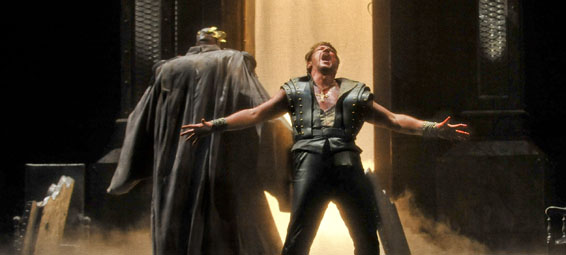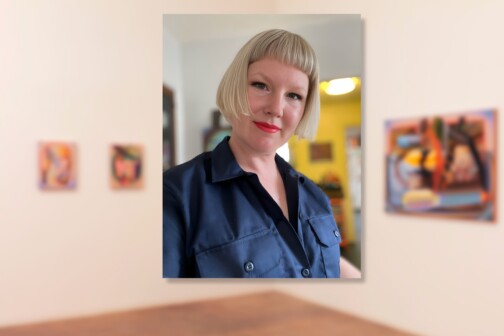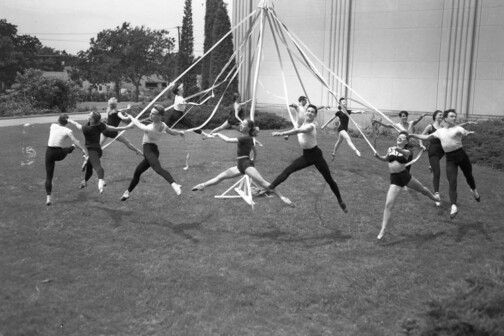On the surface, the Dallas Opera’s new production of Don Giovanni moves the setting of that operatic masterpiece to the 1940s, with costumes and scenery by John Pascoe suggesting a generic Latin American or Spanish environment.
But it’s not so much a specific time or place that matters in this constantly surprising staging, which opened the company’s 2010-11 season Friday night at the Winspear Opera House. This is Don Giovanni unhinged in time, floating in a dream world, where epochs collide in the realm of the subconscious. Costumes, emboldened with oversized epaulets and other symbols of power, emphasize sexuality and hierarchy. The Catholic Church, virtually absent in the original libretto, constantly emerges in the background, most often in neat little parades of nuns and priests, or in the towering statues of the Virgin and Child, echoed in the comic-tragic addition of an infant in the arms of Donna Elvira. One might contend that Mozart and his librettist, Lorenzo da Ponte, ignored, with masculine callousness, the reproductive aspect of Giovanni’s adventures in their version of the story, and that this bit of staging fills in an obvious gap. Beyond that, however, this addition of a live woman holding an infant in the presence of a statue of the Virgin and Child in turn echoes the towering presence of the Commendatore, whose statue comes to life in the penultimate scene like a large zombie.
All of this, in turn, evokes further lust and decadence in this staging. The minuet, accompanied to some of Mozart’s most famous music, becomes a madcap but meticulously complex tango, beautifully choreographed by John de los Santos. Later on, before the arrival of the vengeance-seeking statue of the Commendatore, the dinner scene becomes, with the addition of a scantily-clad all female orchestra, a quasi-pornographic near-rape scene. And the reconciliation of Zerlina (Ailyn Perez) and Ben Wager (Masetto) is deliciously steamy in a manner seldom seen on the operatic stage.
The overall result of this nearly playful tampering and enhancement of Mozart and Da Ponte’s original version is largely successful, making for an unfailingly engaging evening bound to keep any audience member’s eyes glued to the stage, if for no other reason than to see what delightfully bizarre bit of staging is going to happen next. The presentation of a dream-pantomime over the Overture is the only major miscalculation in Pascoe’s concept. Although it fits visually and philosophically with the weird aura that pervades the rest of the staging, it fails because Mozart’s powerful music simply does not lend itself at that point to a wordless visual interpretation. (Directors and designers never quite seem to understand that composers generally knew what they were doing when they included purely musical segments in their scores.)
Romanian conductor Nicolae Moldoveanu brought a bold, nearly romantic liveliness to the score, and the recitatives were realized with imaginative liveliness. Singing was generally fine, though there were no really arresting moments in the vocal performance; Brazilian baritone Paulo Szot was dramatic and vocally pleasant in the title role, and Claire Rutter was powerful as Donna Anna, but Georgia Jarman as Donna Anna and Mirco Palazzi as Mirco Palazzi both warmed slowly to their roles. Tenor Jonathan Boyd as Don Ottavio presented the most consistently impressive performance of opening night.
Ultimately, Pascoe’s brilliant and original visual concept, loaded with insight and imagination, succeeds not only in realizing the surface of the vision of Mozart and Da Ponte, but in exploring the psychological underpinnings that have made this opera one of the landmarks of European culture.
Photo by Karen Almond for the Dallas Opera.





